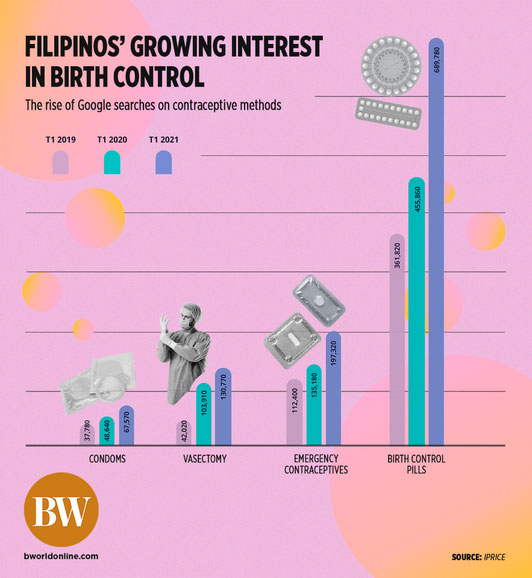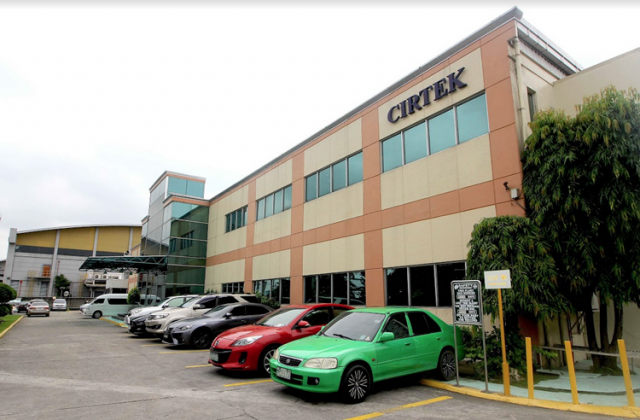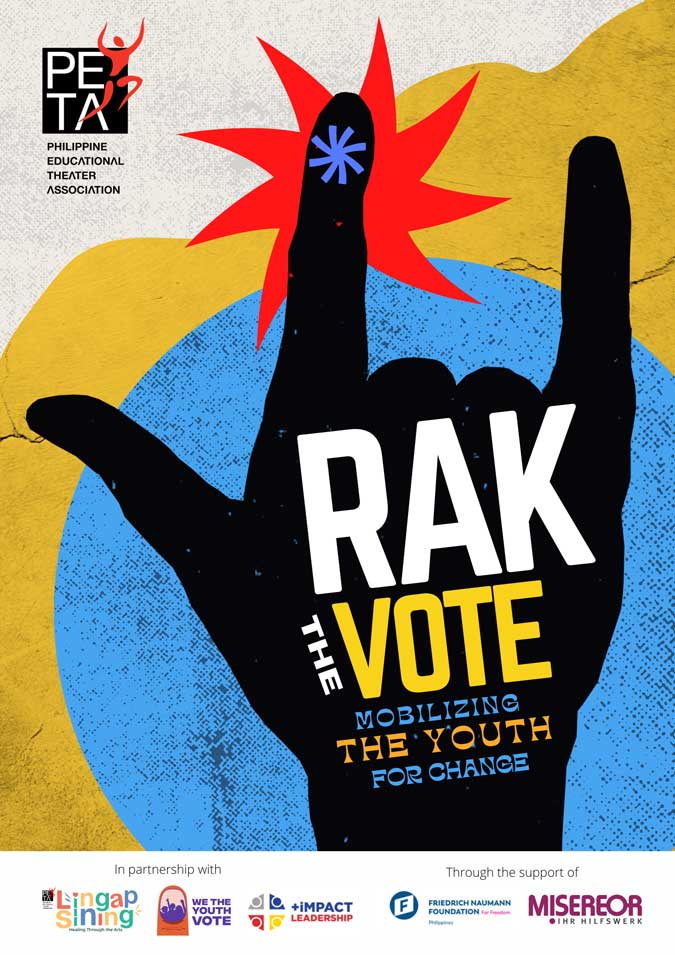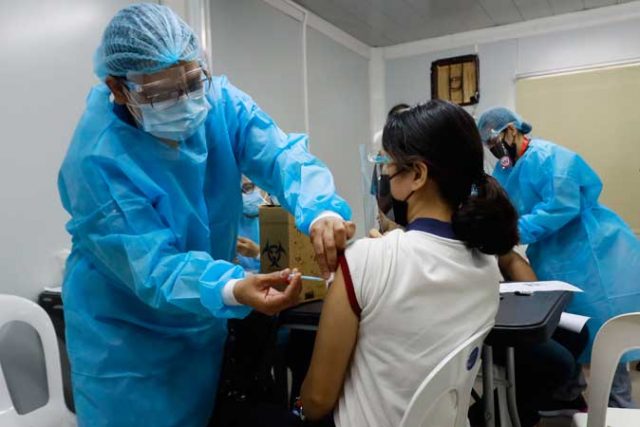By Brontë H. Lacsamana
WORKING among statues covered with tarpaulins, historical records filed in envelopes and folders, and fragile books packed in boxes, staff members of the University of the Philippines (UP) archives were preparing to transfer their vast collections from the top levels of the Gonzalez Hall to an offsite storage location within the Diliman campus.
Having failed tests for structural integrity in 2016, the post-war building that housed the UP Diliman main library and its archives for decades was due for renovation. In 2020, the library and the archives were meant to relocate temporarily to allow this to happen.
However, uncertainties surrounding the early stages of the coronavirus disease 2019 (COVID-19) pandemic and shifting quarantine policies put an end to relocation plans.
“We couldn’t continue our work on the transfer. We had to refocus from in-person work to digital,” said Eimee Rhea C. Lagrama, head of the UP University Archives, during the National Committee of Culture and the Arts’ (NCCA) virtual Sinupan Kumustahan on May 26.
Librarians and archivists at the event shared similar experiences as they recalled the effects of the COVID-19 pandemic on their occupation. With the tactile nature of analog recordkeeping compromised, offices and institutions from both public and private sectors spent the last year scrambling to stay productive via online platforms.
“We concentrated on improving our digital resources. This included indexing and processing of archival materials and attending webinars to upskill our staff, which the university admin encouraged,” Ms. Lagrama said.
Held in time for Heritage Month, which is celebrated in May, the virtual discussion of archiving practices during the pandemic saw an echoing of the same sentiments — making do with what is available, trying to improve skills and resources, and working on backlogs.
GRUELING MIGRATION PROCESS
From a local government perspective, the situation was “disastrous,” according to Cedric G. Dayta, secretary to the Sanggunian of Lugait, Misamis Oriental, and head of the Lugait library, archives, records, museums, and information center.
A trailblazer on the municipal level, he established the archives in November of 2006 to solve the problem of access after there was trouble locating an important Sanggunian document. With help from NCCA, Lugait’s collection grew, featuring new and old transcripts and proceedings as well as artifacts such as picture albums belonging to the town’s first mayor.
These efforts paid off when the Lugait Archives was recognized as an outstanding municipal archive multiple times over the past decade. They were also the first municipality in the country to take on paperless legislation back in 2009 — a move to digital that should have set an example for other towns but, unfortunately, didn’t catch on.
“Malayo sa dibdib ng admin ang archiving (Archiving is not a priority for administrators),” Mr. Dayta said. “In the case of the Sanggunian, though we should be undertaking paperless legislation, they don’t invest, so we don’t really conduct paperless sessions.”
Meanwhile, on a national level, the process of digital migration had already begun. The Senate’s Legislative Records and Archives Services (LRAS), headed by Jose. G. Villapando, started digitization in 2018 using a system powered by a customized portal.
From impeachment proceedings to congressional investigations, documents directly handled by clients — whether for reading or photocopying — shortened their shelf life. Now, that risk is reduced since researchers can instead access digitized legislative records in the LRAS office. Remote access to e-copies of materials is also allowed via e-mail request.
This digitization didn’t occur overnight, however. “The system is already running, but as of this May, the Senate Digital Archives project is still at 60% to 65% completion,” Mr. Villapando said.
Similarly, the House of Representatives’ (HRep) archives is also a work in progress. They’ve relied on online tools to classify library materials and assist researchers looking for records in their collection. The electronic legislative library, open since 2016, remains available to the public if there’s no strict quarantine in place, but e-mail requests have become common.
The office of Marivic M. Pareja, director of the HRep archives, reported the need for a centralized information system for the staff working from home as well, which they’ve begun to address by seeking digital skills training. Development of an online catalog started in May.
ENSURING PUBLIC ACCESS
After digitizing records and catalogs, making an archive accessible to the public is the second half of the job. Lou Rafael B. Cañedo, program manager of the Mindanao Film Archive, shared that the mission of their archive is collecting, preserving, and providing access to films and other moving images that capture the culture and heritage of Mindanao.
Started in 2018, the collection was born digital, hosted on a server in their office. Access to the films was provided through three interactive kiosks in Cinematheque Davao, Cinematheque Nabunturan, and the city museum of Cagayan De Oro.
“The pandemic slowed down our workflow, as we didn’t have a system in place for format transcoding and other file management online,” said Mr. Cañedo, “Temporary closures of the facilities where the kiosks were located also limited public access.”
Like other workplaces, they have had to adapt to working on file-sharing platforms to bring some features of the kiosks online. The Mindanao Film Archive’s database has yet to be launched.
Meanwhile, the concerns were different at ABS-CBN’s film restoration project Sagip Pelikula. Their collection of over 25,000 film rolls, video tapes, and hard drives — all in all amounting to around 3,000 films — benefited from temperature-controlled facilities, so maintenance was minimal. Restoration could be done by technicians on their computers at home.
Spreading their advocacy online was the priority. “Our efforts are two-pronged: archiving, which also involves preservation and restoration, and advocacy, which makes sure the things we do are seen by many,” said Leonardo “Leo” P. Katigbak, who started the ABS-CBN film archives in 1994 and now heads the Sagip Pelikula campaign.
One way to do this was making films accessible through platforms like Apple TV, Key to Experiences (KTX.ph), and even Facebook. For Mr. Katigbak, advocacy campaigns are needed to spread awareness.
“This is a legacy that we want to give to the next generation of Filipinos so they don’t forget the people who’ve brought honor to the Philippines all these years,” he said.
POLICIES AND COLLABORATIONS
While the pandemic and its attendant lockdowns heightened the shift to digital, the Philippines still has a long way to go in terms of digitization and archiving in general.
Archiving itself is relatively new in the country, said Rosemarie O. Roque, secretary of the National Committee on Archives (NCA) and moderator of the Kumustahan event, in an online interview with BusinessWorld.
The Republic Act installing a national archive (Republic Act 9470, or the National Archives of the Philippines Act) was created in 2007, which is recent compared to other countries (the United States, for example, formed the National Archives and Records Administration in 1934).
“Marami pang kailangang gawin. Yung pagkakaroon pa lang ng laganap na archives — ang dami pang dapat tayuan (There’s still a lot to do. Just the existence of widespread archives in general will require much work),” she said.
Aside from establishing the National Archives of the Philippines (NAP), the National Archives Act also aims to strengthen the system of management and administration of archival records and to conserve Filipino cultural heritage and resources.
The NAP continues to do its job, releasing in May 2020 a memorandum circular on handling and disinfecting patient records deemed infectious. The agency also safely disposes of valueless records from various government units across the country.
The NAP also rolled out an electronic records management policy via Zoom this May, with representatives from various local and national government agencies in attendance.
“We released it because we know of many agencies struggling to shift traditional records to electronic formats,” said Maureen Janet G. Mercado, a supervising records management analyst at NAP. “We want LGUs (local government units) to be guided in starting and maintaining systems.”
Despite varying levels of openness to digitization, everyone has had to adapt to the times. Sharing best practices at events like Kumustahan eases the burden. NCA’s Ms. Roque maintains that archiving is a selfless act. “You don’t archive for yourself. And it’s inherently collaborative because it’s never easy,” she said.














